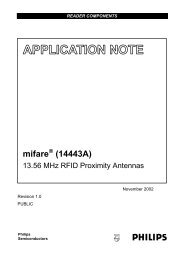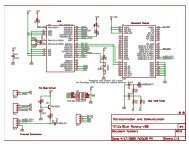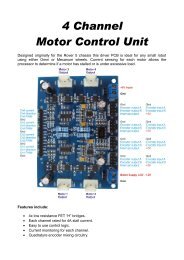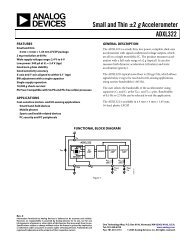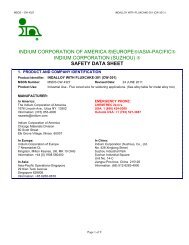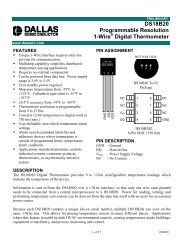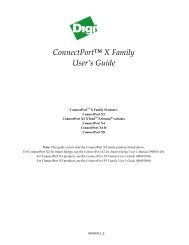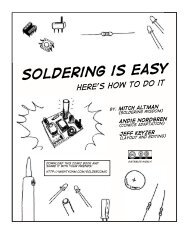SanDisk SD Card
SanDisk SD Card
SanDisk SD Card
You also want an ePaper? Increase the reach of your titles
YUMPU automatically turns print PDFs into web optimized ePapers that Google loves.
Revision 2.2Chapter 1 – Introduction<strong>SanDisk</strong> <strong>SD</strong> <strong>Card</strong> Product Manual1.12.8 Data Protection in the Flash <strong>Card</strong>Every sector is protected with an error correction code (ECC). The ECC is generated (inthe memory card) when the sectors are written and validated when the data is read. Ifdefects are found, the data is corrected prior to transmission to the host.1.12.9 Write ProtectionTwo-card level write-protection options are available: permanent and temporary. Both canbe set using the PROGRAM_C<strong>SD</strong> command (refer to C<strong>SD</strong> Programming). The permanentwrite-protect bit, once set, cannot be cleared. This feature is implemented in the <strong>SD</strong> <strong>Card</strong>controller firmware and not with a physical OTP cell.Use the Write Protect (WP) Switch located on the card’s side edge to prevent the host fromwriting to or erasing data on the card. The WP switch does not have any influence on theinternal Permanent or Temporary WP bits in the C<strong>SD</strong> Register.1.12.10 Copy BitThe copy bit can be used to mark an <strong>SD</strong> <strong>Card</strong> content as an original or a copy. The copybit of the card is programmed as a copy when testing and formatting are performed duringmanufacturing. When set, the copy bit in the C<strong>SD</strong> Register is a copy and cannot be cleared.The card is available with the copy-bit set or cleared. If the bit is set, it indicates that thecard is a master. This feature is implemented in the card’s controller firmware and not witha physical OTP cell.1.12.11 C<strong>SD</strong> RegisterAll <strong>SD</strong> <strong>Card</strong> configuration information is stored in the C<strong>SD</strong> Register. The MSB bytes ofthe register contain manufacturer data and the two least significant bytes contain the hostcontrolleddata: the card copy/write protection, and the user file format.The host can read the C<strong>SD</strong> Register and alter the host-controlled data bytes using theSEND_C<strong>SD</strong> and PROGRAM_C<strong>SD</strong> commands.1.13 SPI ModeThe SPI mode is a secondary communication protocol for <strong>SD</strong> cards. This mode is a subsetof the <strong>SD</strong> Protocol, designed to communicate with an SPI channel, commonly found inMotorola and other vendors’ microcontrollers.Table 1-3 SPI ModeFunctionNegotiating Operating Conditions<strong>Card</strong> Acquisition and IdentificationDescriptionThe operating condition negotiation function of the <strong>SD</strong> <strong>Card</strong> busis supported differently in SPI mode by using the READ_OCR(CMD58) command. The host works within the valid voltagerange (2.7 to 3.6 v) of the card or put the card in inactive stateby sending a GO_INACTIVE command to the card.The host must know the number of cards currently connected onthe bus. Specific card selection is done via the CS signal(CD/DAT3). The internal pull-up resistor on the CD/DAT3 linemay be used for card detection (insertion/removal). Additionalpractical card detection methods can be found in <strong>SD</strong> PhysicalSpecification’s Application Notes given by the <strong>SD</strong>A.© 2004 <strong>SanDisk</strong> Corporation 1-9 12/08/04



